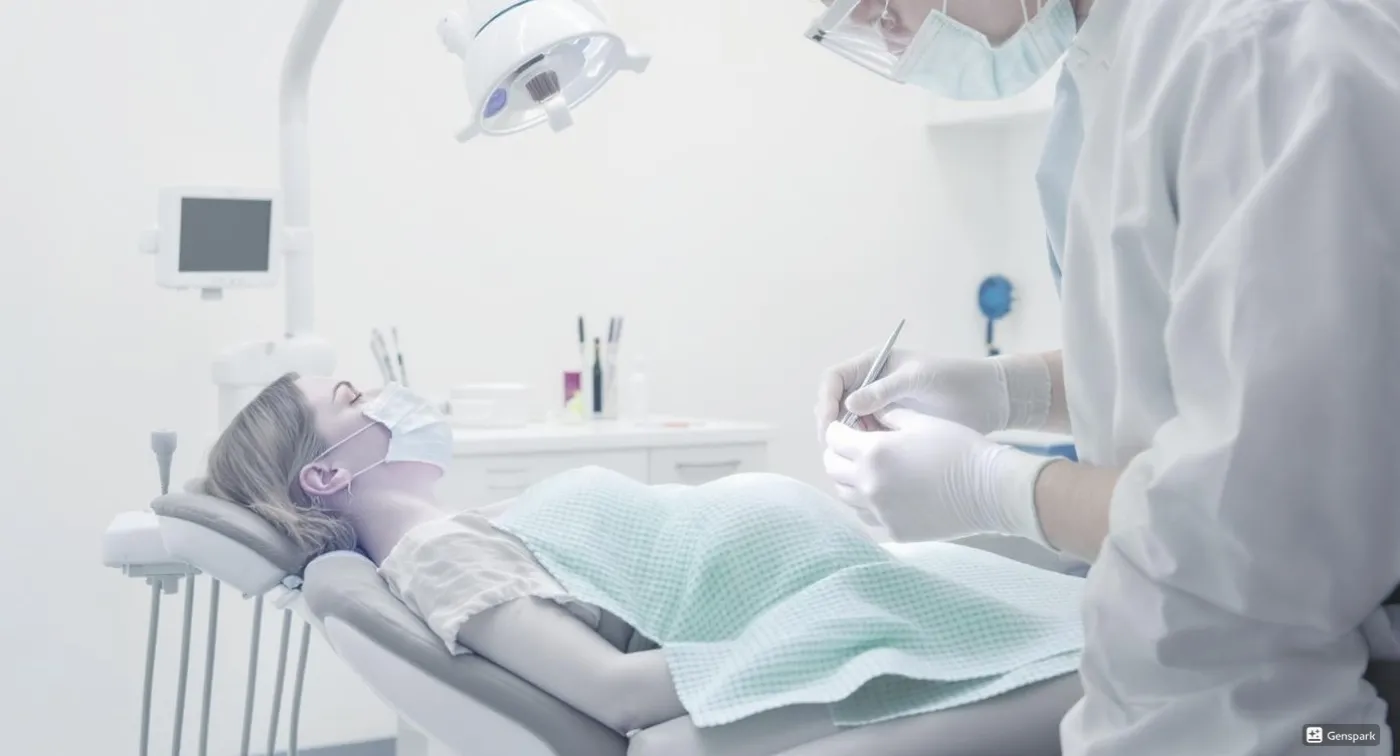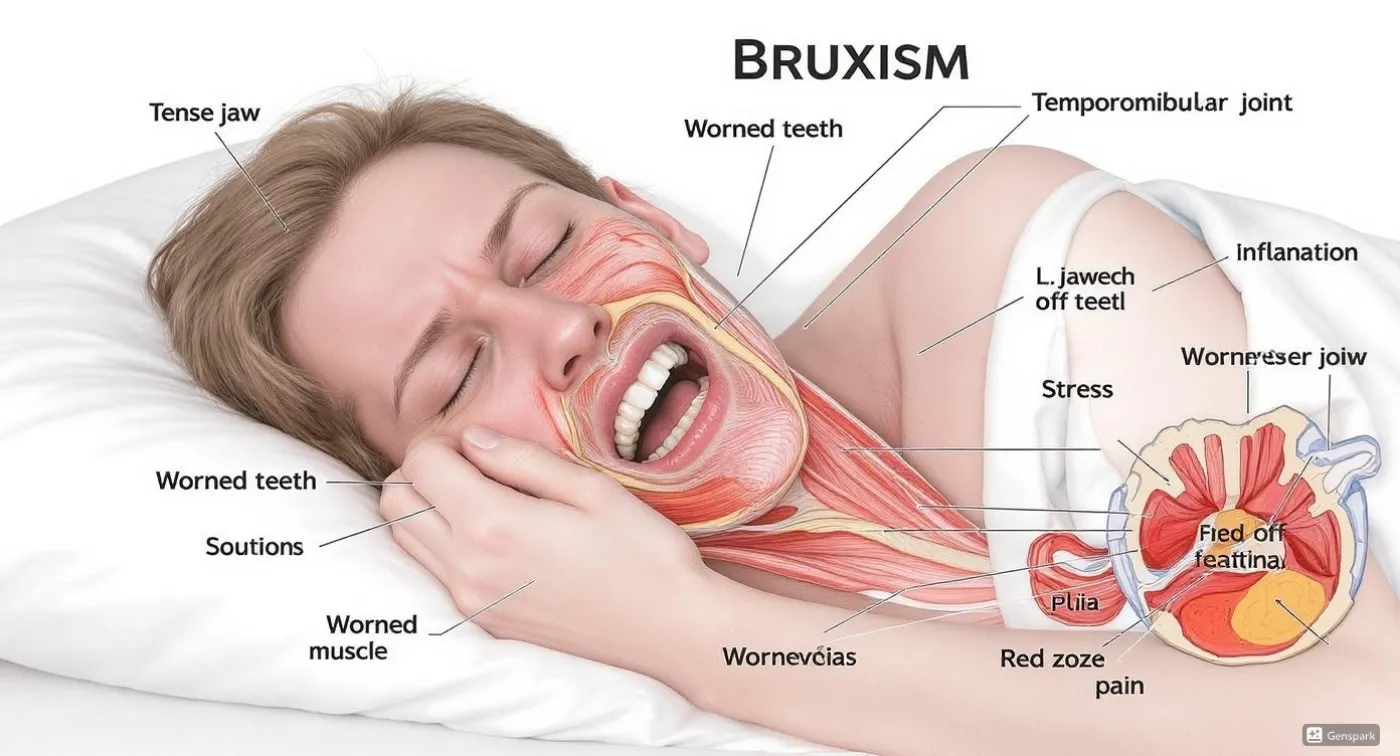Diastema is not just an aesthetic issue. It can also lead to speech difficulties, improper distribution of chewing forces, and an increased risk of periodontal disease. Early detection and a comprehensive treatment approach help achieve excellent results and prevent future complications.

Diastema: How to Close the Gap Between Teeth?
What Is a Diastema?
A diastema is a gap between the front teeth, most commonly between the upper central incisors. In everyday language, it's often referred to as a "tooth gap." This space can be barely noticeable or quite prominent - up to 9 mm wide. It occurs in both children and adults. In childhood, a diastema is often a temporary condition during the transition from baby teeth to permanent teeth. However, in adults, it is considered a dental issue. While many people view it as a cosmetic flaw, a diastema can also cause functional problems, so it's important to consult a dentist who can recommend the right way to address it.
What Causes a Diastema?
A diastema can develop for various reasons, related to either the body’s natural development or external factors. Understanding the underlying cause is crucial for choosing the right treatment. Possible causes include:
- Genetics. If a parent or close relative has a gap between their teeth, it’s likely the child may develop one too. This may be due to the shape of the jaw, the position of the teeth, or their size. Genetic factors may also include abnormalities in the labial frenum (the tissue connecting the upper lip to the gums), which can cause a diastema if it's too thick or low.
- Harmful habits. Thumb-sucking in children puts pressure on the front teeth and may cause them to spread apart. In adults, habits like chewing on pens, pencils, nails, or other hard objects can have a similar effect.
- Developmental issues of the dentoalveolar system. Sometimes, the gap results from irregular tooth eruption, such as delayed appearance of permanent incisors or incorrect replacement of baby teeth. In some cases, front teeth may erupt at an angle. A common cause is a low or thick labial frenum. Diastemas can also occur due to size discrepancies in the dental arch - if the teeth are too small and the jaw too wide.
- Other factors. Rare but significant causes include the presence of an extra tooth bud between the front teeth (detectable via X-ray). Tooth loss (especially molars) can also lead to tooth shifting and gapping. Periodontal disease weakens the support structures of teeth, causing them to move over time. Trauma to the teeth can also contribute to a diastema.
Proper diagnosis of the cause behind the gap is essential for selecting the most effective treatment plan.
Types of Diastema
Gaps between teeth can vary in origin, shape, and nature. The main types of diastema include:
- False Diastema. This type of gap is most commonly seen in children during the development of the jaw and teeth. When baby teeth are replaced by permanent ones, a space between the front incisors is a temporary and normal occurrence as the new teeth simply need more room. This is referred to as a false diastema. In most cases, it closes on its own once the permanent teeth erupt fully and the bite forms properly. No treatment is typically needed, only regular monitoring by a dentist.
- True Diastema A gap is considered a true diastema if it remains after the jaw has fully developed and the permanent bite is formed. This type of diastema is permanent and requires professional dental. correction. It is the most common form seen in adult patients.
- Symmetrical and Asymmetrical Diastema. These are classified based on the position of the front teeth. A symmetrical diastema means that both incisors are evenly displaced from the center, creating a balanced, central gap. An asymmetrical diastema occurs when one incisor is more displaced than the other, making the gap appear uneven or slanted. This type is more complex to treat, especially if accompanied by bite issues.
- Complicated Diastema. This form involves additional dental issues alongside the gap, for example, teeth may be rotated around their axis or significantly tilted. Treating a complicated diastema requires a comprehensive approach, often involving an orthodontist, surgeon, and other specialists. Although treatment can be more involved and time-consuming, it is usually highly effective when properly managed.
In any case, it is important to consult a dental professional. Early detection and correction of a diastema can help prevent more serious problems in the future.
Consequences of Diastema
At first glance, a gap between teeth may seem like a minor imperfection or a unique feature of one’s smile. However, it can lead to several negative consequences, such as:
- Psychological discomfort. Diastema often causes dissatisfaction with one’s appearance. The noticeable gap can make the smile appear “incomplete” or asymmetrical. As a result, people may feel self-conscious, avoid smiling in photos, or even limit social interactions. While some embrace the gap as a signature look (especially public figures like actors or models), for most, it becomes a source of insecurity.
- Speech difficulties. Gaps between the teeth can interfere with proper pronunciation, particularly of sibilant sounds like “s” and “sh.” This affects both children and adults and may require speech therapy or correction of the dental issue.
- Chewing problems Uneven spacing between teeth disrupts the natural distribution of chewing force. This can lead to accelerated wear of certain teeth and even shifting of the bite over time.
- Increased risk of cavities and gum disease. Diastema creates “trouble spots” where plaque and tartar tend to accumulate. This increases the risk of gum pockets, gingivitis, periodontitis, and even premature tooth loss if left untreated.
- Saliva spray when talking. Air and saliva can escape through the gap while speaking, which may be embarrassing and hinder communication.
Diastema treatment is recommended if the condition causes physical or emotional discomfort. The decision to correct it should be made together with a dentist, taking into account medical indications and the patient’s perception of their appearance.
Diastema Treatment Methods
Modern dentistry offers several effective options for closing a gap between the teeth. The choice depends on the underlying cause, severity of the issue, patient’s age, dental health, and budget. Common treatment methods include:
Orthodontic treatment
The most effective solution is the use of braces or clear aligners. Braces (metal, ceramic, or sapphire) gradually move the teeth into position, even in complex cases. Aligners are a more aesthetic and comfortable alternative, but are generally less powerful and more suitable for minor gaps or in children.
Veneers and Lumineers
These are thin porcelain shells applied to the front teeth to close the gap visually. This method is ideal when the diastema is purely cosmetic and not accompanied by bite issues.
Composite bonding (artistic restoration)
This involves reshaping or enlarging the teeth with composite materials. It’s a quick and painless solution, though not as durable as veneers.
Surgical intervention
In cases where the gap is caused by anatomical factors, such as a low-attached upper lip frenulum , a small surgical procedure may be required. Frenectomy is especially common in children to prevent future dental issues.
Often, a comprehensive approach is used to achieve the best result. For example, a patient may first undergo frenulum surgery, followed by orthodontic treatment with braces, and finish with veneers for an ideal aesthetic outcome.
Treatment of Diastema in Children
Gaps between baby teeth are often caused by a mismatch between the growth rate of the teeth and the development of the jaw. In most cases, these gaps disappear on their own as the child grows and permanent teeth come in. However, if the gap between the teeth persists or is accompanied by other orthodontic issues (such as a misaligned bite), it is important to consult a dental clinic.
At an early age, removable orthodontic appliances, such as plates or aligners, may be used to correct the issue gently and effectively.
To prevent the development of a permanent diastema, it’s important to address harmful habits early on (such as thumb sucking or tongue thrusting) and monitor the growth of the jaw and teeth. Regular dental check-ups help detect and address any issues at an early stage, ensuring healthy dental development.
Request a call
We will contact you to schedule a convenient time for your consultation and connect you with the right specialist
More articles
We have gathered all the most interesting posts from our specialist doctors in our blog just for you
Dental Treatment During Pregnancy: Myths and Facts

Bruxism (Teeth Grinding) and How to Get Rid of It Forever


Request a call
We’ll get back to you shortly!

Leave a Review
Your feedback means a lot to us!



